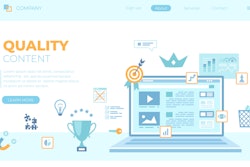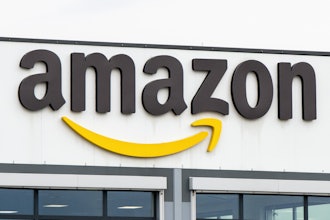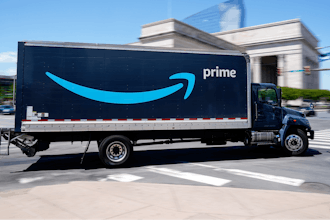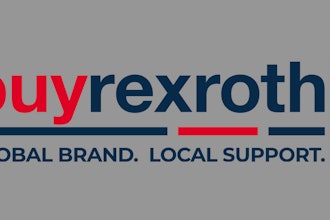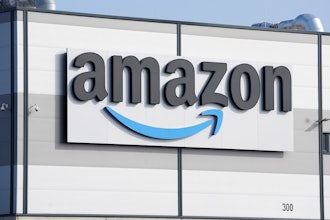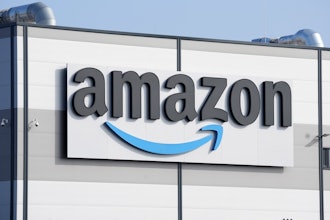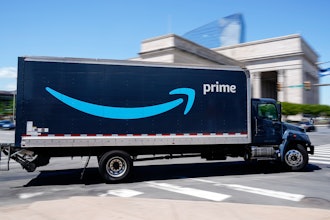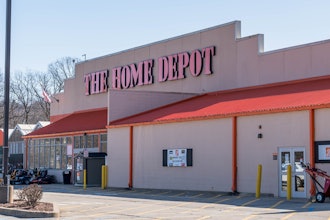
Building an e-commerce operation is a great way to tap into the growing interest in online buying, but simply building a website and opening a digital storefront isn’t necessarily going to result in additional revenue. Distributors looking to maximize their return in the digital channel need to ensure that their sites are conducive to a good customer experience.
There’s a simple equation that distributors can use when they are thinking about ways to drive e-commerce revenue:
Sessions x Conversion Rate x Average Order Value = Revenue
Basic multiplication says that increasing just one of these variables, while keeping the others the same, will result in more revenue. Increasing conversion rates is an obvious way to grow revenue, but it’s not necessarily a simple fix. In fact, some newer eCommerce sellers may look at their current conversion rate and fear that it is too low.
Don’t be discouraged about conversion rates that are lower than the industry benchmark, which is usually between 3 and 5 percent. Instead, leverage your analytics reporting to understand why your numbers are low and where you are losing potential customers in the conversion funnel. The cause may be to a distracting web design, lack of content, slow page-load speeds, or a combination of factors. What may seem like a non-issue to you could be the cause of bounce rates and lost sales.
There are four primary areas of e-commerce site management that may be contributing to lower-than-expected conversion rates, and there are several different elements within those areas that may require adjustment. Use this list to start optimizing conversion rates.
Read More: How Distributors Can Use Content to Increase Web Sessions
1. Site usability
Design: Maintain a clean user interface that features purposeful graphics, high-res images, easy-to-use filtering and navigation, and readily available contact information on every page. Everything on the page should help the buyer answer the question of whether or not they want to buy the product.
Page load speed: Your site can look great and have relevant content, but if it doesn’t respond quickly and efficiently for users, they will go elsewhere. Studies have found if a page takes more than three seconds to load, 75% of site visitors will likely leave the site. Make sure you have the right web architecture in place – one that’s housed in the cloud – that can handle the influx of site traffic and perform efficiently for users.
Mobile performance: To ensure the best user experience on a smartphone or tablet, build your site with a responsive design and supplement it with a mobile app that offers alternative ways to shop and buy your products using the phone’s inbuilt features.
On-site search: SEO matters in helping bring prospects to your eCommerce site, but it’s also critical for on-site search, and helping site visitors find what they’re looking for. After all, if prospects can’t find what they’re looking for, they can’t buy it. Take the time to manage the back end of site search to boost the rankings of some items in the search results and establish synonyms so that buyers can find products (weed whacker as opposed to string trimmer, for example). Also, think about common potential misspellings, and then use site search to intelligently recommend the product that the customer likely meant to search for. It’s much better to say “did you mean this?” instead of returning zero search results.
2. Commerce
Shopping cart: Make shopping as convenient as possible for buyers by including features like a shopping cart quick-view menu, an option to save their cart for a future visit, and multiple ways to add an item to their cart with a single click.
Pre-built shopping carts: Make things as easy as possible by having a sales rep build the cart for a customer following a conversation, and then have them send that cart to the customer with a message along the lines of “here’s what you said you needed.” All they have to do is pay for the items.
Checkout: While purchase orders and invoicing are still relevant in the B2B marketplace, more buyers are looking for alternate payment options like credit cards and e-procurement systems. Integrate payment gateways and punchout capabilities into your eCommerce offering to make checkout fast and flexible for everyone.
Delivery options: In order to compete with online marketplaces that offer a nearly unlimited selection of products with next-day delivery and free shipping, distributors must provide their own virtual “endless aisle” of product offerings with convenient delivery options. When your customers need a product fast, you can help with a “buy online, pick up in store” (BOPIS) feature.
Abandoned cart alerts: Automatically trigger an email alert letting a buyer know that they have items in their cart waiting for a checkout. These alerts can be set to go after a few hours, or a day later. It’s an especially helpful tool for repeat buyers who already have accounts.
3. Content
Search features: Search is about helping customers find what they’re looking for, so look for ways to make the experience even easier. Add a “add to cart” button within the search bar, so that shoppers don’t even have to click through to a product page to get what they want. At the same time, use search-driven promotions, showcasing sales whenever customers search for related products.
Pricing and availability: Buyers shouldn’t have to jump through hoops to access pricing and available quantities. If you’ve been holding off publishing product pricing on your website because you’re afraid of losing sales to the competition, the fact is you’re already missing out. According to Forrester Research, the top two reasons buyers make purchases online are for convenience and speed. In fact, buyers are more willing to purchase products from you – even at a higher price – if you can make their job easier for them. Customer-specific pricing is an important part of the experience as well. If a buyer gets a quote from a sales rep, and the pricing on the site doesn’t match that quote, then they won’t convert a cart on the site. Use the ERP system to match negotiated pricing to customer accounts to avoid any confusion.
Calls to action: You can use meaningful calls to action that serve both you and your site visitors. Make them persuasive enough to encourage people to stay on your site, take action, and continue through your conversion funnel. For example, rather than say “out of stock” for an unavailable product, add a link that says “Chat about availability.” That should let a buyer instantly connect with an inside sales rep, who can tell the buyer when an item might be available. That’s much more likely to result in a conversion than a buyer seeing the “out of stock” message and abandoning your site for a competitor who does have what they’re looking for.
4. Confidence and trust
Access to information: Build a large repository of case studies, industry reports, white papers, and product videos that site visitors can access. The more relevant information you can supply, the more confidence you will earn from buyers. When they can rely on your site to help them make a purchasing decision, you’re more apt to make a sale, as well as a loyal customer.
Customer testimonials and reviews: Encourage customers to submit reviews about your products, your company, and your employees. You can build their trust by addressing any concerns they may relay, but you can also take advantage of the positive commentary by featuring them on your website, with their permission. Customer testimonials go a long way as B2B buyers value the opinions of fellow industry professionals.
Optimizing for improvement
This list is in no way comprehensive, but it does represent common ways that distributors can optimize their eCommerce conversion rates. Remember, even the slightest increase in your conversion rate is guaranteed to positively impact your online revenue. Take advantage of Google Analytics metrics and reporting to  Bennett
Bennett
Joe Bennett spearheads sales strategy for Unilog, particularly for CIMM2. He has spent his entire career in distribution software, joining Eclipse in 1991, in which he co-authored the first version of Eclipse software and helped support, install, sell and teach users. Joe was an executive, principal and board member at Eclipse until it was sold to Intuit in 2002, but continued his association as an Eclipse evangelist. After a stint at Infor as Senior Director of Wholesale Distribution Solutions, Joe joined the Unilog team where he brings a deep understanding of SX Enterprise, another major distribution ERP system.




